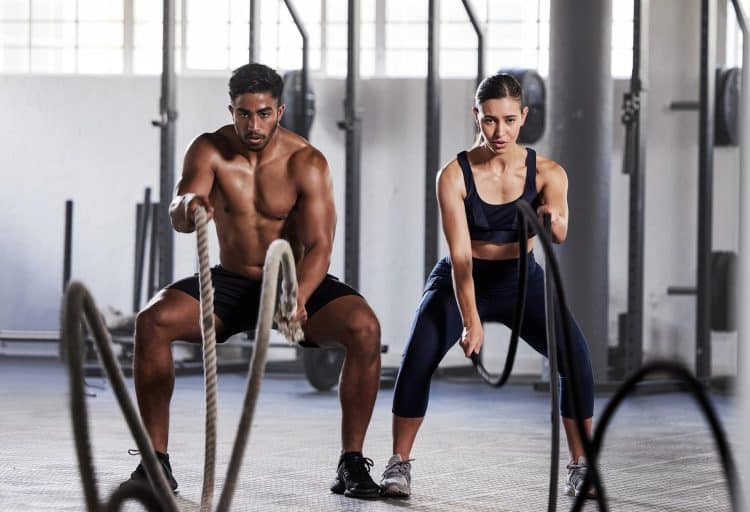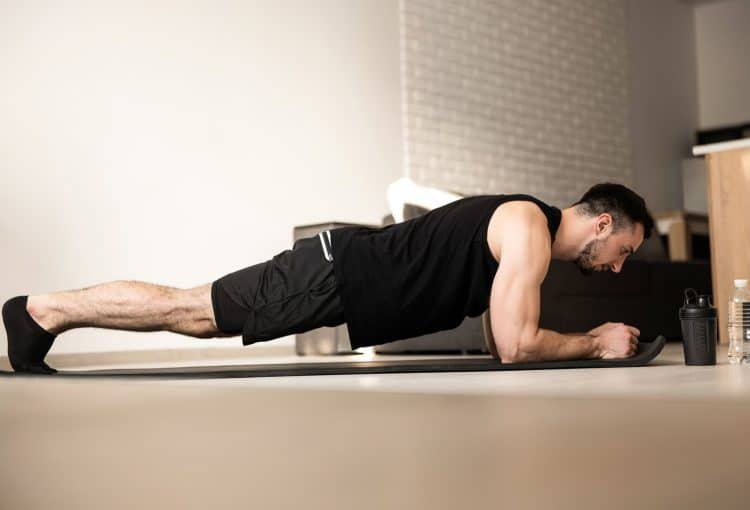As a personal trainer with almost a decade of experience coaching people, I can attest that time constraints are among the biggest bottlenecks keeping people from beginning or sticking to their transformation journey.
Most people scoff at the idea of working out for 60 to 120 minutes every day. A hectic workday or family commitments can derail the best of intentions. All these symptoms point in a single direction — modern fitness routines are usually at odds with a busy schedule.
However, over the years, I’ve realized that there is a better way. You can achieve significant fitness results with tiny, manageable efforts. Enter — microworkout method.
Microworkouts are designed for busy individuals. They include short bursts of intense exercise done multiple times throughout the day. Think of them as fitness snacks; they are quick, satisfying, and surprisingly effective.
Impressed by what I had been reading online about microworkouts, I decided to give them a shot. I designed a two-minute workout that fit my training objectives and performed it eight times daily for 30 days. Long story short, I was amazed with the results.
In this article, I take you over everything you need to know about the microworkout challenge, including the science behind this training regime, its benefits, and how to include it in your own training. So, sit tight and read on.
Level Up Your Fitness: Join our 💪 strong community in Fitness Volt Newsletter. Get daily inspiration, expert-backed workouts, nutrition tips, the latest in strength sports, and the support you need to reach your goals. Subscribe for free!
Science Behind Microworkouts
Here are reasons why microworkouts should be a part of your training regime:
The HIIT Impact
First things first, microworkouts are a form of high-intensity interval training (HIIT), which has been shown to safely improve cardiorespiratory fitness, body composition, and various health-related parameters. (1)
The HIIT protocol involves short bursts of intense exercise followed by brief rest periods. For instance, sprint all-out for 20 seconds, catch your breath for 10 seconds and then repeat this cycle.
HIIT splits can be more accessible when they are offered in bite-sized routines. Most people can squeeze in a two-minute microworkout during their lunch break or between meetings. Plus, the endorphin and blood flow boosts make you feel great during the day.
Metabolic Afterfun
I am a fan of HIIT-type workouts because of their impact on metabolism. High-intensity training ensures that you are constantly burning calories at an elevated rate even after hours of finishing your workout. This phenomenon is known as excess post-exercise oxygen consumption (EPOC).
A meta-analysis concluded that HIIT workouts lead to positive physiological changes that may help reduce the risk factors associated with metabolic syndrome (a cluster of conditions that increase the risk of heart disease, stroke, and type 2 diabetes). (2)
“Individuals engaging in short bursts of vigorous physical activity, for just 1-2 minutes, three times a day, saw a significant health impact: a 50% decrease in cardiovascular mortality and a 40% reduction in deaths from all causes and cancer.” — Dr. Rhonda Patrick (Ph.D. in Biomedical Science)
What else? These benefits of short bursts of vigorous training are also evident in individuals who typically do not engage in structured exercise routines.
Building Muscle
Make no mistake, the benefits of microworkouts don’t end at fat loss. Research shows that these short, intense bursts of exercise can also be effective at eliciting muscle growth (3). However, you must be mindful of the overall training volume, intensity, frequency, and diet to avoid muscle atrophy.
When you challenge your muscles with high-intensity exercise, you create micro-tears in the muscle fibers. With the right amount of rest, recovery, and nutrition, they grow back bigger and stronger. This is also the basics of muscle building.
The most interesting part about this is that as you grow stronger, you can push yourself harder in the gym, maximizing the cardiovascular and muscular benefits.
Designing Your Microworkout Plan
The effectiveness of a microworkout plan hinges on a well-structured program. Here are the key principles you must internalize:
- Frequency: Beginners should aim for six to eight microworkouts spread throughout the day for the best results.
- Intensity: Each two-minute workout should leave you slightly breathless. Remember, it’s a sprint, not a marathon.
- Variety: Program your microworkouts in a way so that you’re training your whole body.
- Progression: As you get stronger and faster, gradually increase the reps, circuits, and overall difficulty to avoid hitting a plateau.
- No rest: Avoid resting between exercises. Keep the training equipment (if applicable) close to you so you don’t have to go looking for them during the microworkout.
Sample Microworkout Schedule: A Day of Fitness Snacks
Now that you know the basics of microworkouts, let’s talk about the workouts and how to get started.
Below is the exact training regimen I used:
| Exercise | Sets | Reps |
| Jumping Jacks | 1 | 10 |
| Push-Ups | 1 | 10 |
| Squats | 1 | 10 |
| Mountain Climbers | 1 | 10 |
| Bicycle Crunches | 1 | 10 |
| High Knees | 1 | 10 |
Since I did these bite-sized workouts eight times daily, I kept the exercises the same and tweaked the reps based on how I was feeling during the workout. More advanced exercises can feel free to perform multiple circuits of this workout for optimal results.
That said, you can change the exercises to your liking; just make sure you go all out during the two-minute workout window. Write down the workout program on paper and place it where you can see it clearly during the workout. This way, you won’t have to stop during the workout to find out what’s next.
Pro Tip: A smartwatch or a remote-controlled digital timer can be game changers for your microworkout routine.
Exercise Variety For People of Different Experience Levels
Contrary to what some people think, microworkouts aren’t limited to bodyweight exercise and can be equally effective for advanced folks. Here are the different tools you can use for these workouts:
Bodyweight
No surprises here, you can use your own body weight as resistance to train your full body. Some examples include squats, lunges, push-ups, planks, burpees, mountain climbers, and jumping jacks.
Resistance Bands
I recommend most of my clients progress to resistance band training to make their workouts more challenging. Banded squats, rows, lateral walks, bicep curls, and shoulder presses are some of my go-to exercises.
Level Up Your Fitness: Join our 💪 strong community in Fitness Volt Newsletter. Get daily inspiration, expert-backed workouts, nutrition tips, the latest in strength sports, and the support you need to reach your goals. Subscribe for free!
Stairs
Use a staircase to perform exercises like calf raises, step-ups, and sprints. However, be very careful while doing them.
Other Tools
Jumping rope, shadowboxing, and dancing are other excellent microworkout tools to take your training to the next level.
Remember, although microworkouts last only two minutes, doing them six to eight times daily at maximum intensity can result in significant systematic fatigue. Depending on your current fitness level and training objective, take one to two days off each week to allow your body enough time to rest and recuperate. This significantly lowers the risk of injury and maximizes results.
My 30-Day Microworkout Journey
Here is a week-by-week account of my experience with this experiment:
Week One: The Initial Shock
As someone who has been training for almost two decades, two minutes’ worth of workouts sounded like peanuts to me. However, that perception changed as soon as I did my first microworkout. The lactic acid build-up and muscle burn were unreal. However, my body started to adjust in the final days of the first week.
Week Two: A Surprising Shift
I was no longer dragging myself through these microworkouts. Instead, I eagerly waited for the reminder on my phone to go off so I could destroy the workout. These two-minute workouts left me feeling invigorated for my daily tasks.
Week Three: Strength and Stamina Surge
The third week was when I started witnessing tangible results. My strength and stamina increased, allowing me to complete these workouts with greater ease. At the same time, I had to increase the intensity of these workouts to keep the challenge alive. I also saw an improvement in my muscle definition and body fat percentage.
Week Four: Beyond the Physical
I was psyched for the final week as I knew I only had seven days to make it all count. My pedal-to-the-metal mindset magnified my results and improved my sleep and energy levels.
Results of the 30-Day Microworkout Challenge
Check these out:
| Measurement | Before | After | Change |
| Bodyweight (pounds) | 185 | 178 | -7 pounds |
| Body Fat (%) | 17% | 15% | -2% |
Although I don’t plan on sticking to these workouts for the long term, I have firsthand experienced their effectiveness and will be programming these microworkouts for my time-strapped clients looking to lose weight and tone up their physiques.
Microworkout vs. Traditional Workouts: A Head-to-Head
Are you wondering if microworkouts are better than traditional workouts? Here is everything you need to know:
Time Efficiency
Traditional gym workouts usually last at least 30 minutes. Plus, time is wasted on travel and waiting in shower queues. Conversely, two-minute microworkouts can be done anywhere, anytime. Same results, way less time.
Adherence
You need to dedicate time to gym workouts, and a missed workout can snowball into skipped weeks, hindering progress. On the other hand, microwkrouts fit seamlessly into even the busiest schedules.
Fitness Improvements
Consistent, high-intensity microworkouts challenge your muscles in unique ways and can produce faster strength and endurance gains and improvements in body composition. I highly recommend tracking your reps and weights to ensure progressive overload.
The Convenience Factor
There is no doubt that microworkouts are more convenient than traditional gym workouts for folks looking to lose weight and stay in good shape. The former gives you the freedom to exercise on your own terms.
3 Microworkouts For Different Goals
Add the following workouts to your regime for the best results:
1. Leg Day Blitz
This is for people focusing on the lower body:
| Exercise | Reps |
| Bodyweight Squats | 20 |
| Walking Lunges | 10 per leg |
| Calf Raises | 15 |
| Repeat | 2-3 rounds |
This combo hits all the major lower body muscles for a strength and endurance boost.
2. Upper Body Blast
To gain significant upper body strength and muscle mass, use this microworkout:
| Exercise | Reps |
| Push-ups | 10 |
| Dips (using a chair) | 10 |
| Pike Push-ups | 10 |
This circuit targets your chest, triceps, and shoulders. Repeat this circuit for as many rounds as possible in the stipulated two-minute window.
3. Core Crusher
Build an ironclad midsection with this workout:
| Exercise | Time |
| Plank | 30 seconds |
| Crunches | 20 |
| Russian Twists | 20 |
| Bicycle Crunches | 20 |
These moves can help build core strength and stability for better posture and performance.
Conclusion
By now, you probably have a whole new perspective on how to get fit in a limited time. Feel free to adopt these two-minute workouts into your own regime to kickstart your transformation journey. The best part about these workouts is that you can do most of them anywhere and anytime.
Remember, small changes in your routine can lead to big results, and achieving your fitness goals with short bursts of activity is easier and more enjoyable than you might have imagined.
So, what’s stopping you from achieving that fitness goal you have been delaying for so long? Internalize these microworkouts and get after it, tiger!
If you have any questions about the microworkouts or need help implementing them in your daily routine, drop them in the comments below, and I’ll be happy to help!
References:
- Wu, Z. J., Wang, Z. Y., Gao, H. E., Zhou, X. F., & Li, F. H. (2021). Impact of high-intensity interval training on cardiorespiratory fitness, body composition, physical fitness, and metabolic parameters in older adults: A meta-analysis of randomized controlled trials. Experimental gerontology, 150, 111345. https://doi.org/10.1016/j.exger.2021.111345
- Serrablo-Torrejon, I., Lopez-Valenciano, A., Ayuso, M., Horton, E., Mayo, X., Medina-Gomez, G., Liguori, G., & Jimenez, A. (2020). High-intensity interval training exercise-induced physiological changes and their potential influence on metabolic syndrome clinical biomarkers: a meta-analysis. BMC endocrine disorders, 20(1), 167. https://doi.org/10.1186/s12902-020-00640-2
- Callahan, M. J., Parr, E. B., Hawley, J. A., & Camera, D. M. (2021). Can High-Intensity Interval Training Promote Skeletal Muscle Anabolism?. Sports medicine (Auckland, N.Z.), 51(3), 405–421. https://doi.org/10.1007/s40279-020-01397-3














Nice read, I really like how this breaks down the practicality of short bursts of activity for busy people. I’d love to see a section where the author integrates more resistance tools like bullet pulley exercises and shows how they can be adapted into the micro-workout framework to add more tension and variety to this routine!
Hi,
Maybe we can have an article dedicated to bullet pulley exercises in the future.
Thanks.